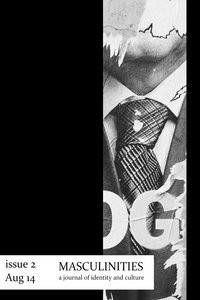Abstract
Pek çok medeniyet, erkeğin otorite figürü olduğu, kadının ise hem evde, hem de toplumda pasif roller aldığı ataerkil yapılara sahip olagelmiştir. Ataerkil sistemden olumsuz anlamda etkilenenler yalnızca kadınlar mıdır, yoksa erkeklerin rolleri de kontrol altında mıdır? Babam ve Oğlum filmi (2005), farklı erkek karakterlerin tasviri üzerinden, ataerkinin, alışılagelmiş algıda erkeklerin rollerini ve erkeklik kavramını nasıl şekillendirdiğini göstermektedir. Babam ve Oğlum, toplumsal cinsiyet rollerinin nasıl inşa edildiğinin, nasıl yön değiştirdiğinin, ve sosyal normlara uygun olarak nasıl tanımlandığının resmini çizmektedir. Filmdeki erkek karakterler, babalar ve kuşaklar arasındaki ilişki, ataerkinin toplumsal cinsiyet rolleri üzerinde kontrol sağlayan temel güç dinamiği olarak işlev görme yollarını ortaya koyar. Filmde baskın baba figürünü temsil eden Hüseyin, tüm ulusun ataerkil yapısını sembolize etmektedir. Hüseyin'in amacı, erkek egemen toplumun amacıyla ortaktır: Bireyleri önceden belirlenmiş rol ve varsayımlar doğrultusunda şekillendirmek, kontrol etmek. Yönetmen Çağan Irmak, geleneksel Türk ailesini tasvir ederken, erkek ve kadın arasında evde ve sosyal alanda hüküm süren güç ilişkilerine ışık tutmaktadır. Toplumun çekirdeğinde yer alan kurum olarak aile, erkeklerin de baskı altında olduğu ve paylarına düşen rolü icra etmek zorunda bırakıldıkları sosyal düzenin modeli olmaktadır. Babam ve Oğlum, ataerkiyi farklı bir açıdan ele alarak, erkek egemen toplumda babalık, erkeklik, toplumsal cinsiyet rolleri ve aile içi dinamikler üzerine kendine özgü bir bakış açısı ortaya koymaktadır.
Keywords
Abstract
Many civilizations have patriarchic structures in which males represent the authority figure while females have passive roles both at home and in the society. However, are only females affected negatively in a patriarchic system, or does the dominant system control the roles of males as well? By depicting different male characters, Babam ye Oglum (My Father and My Son, 2005) shows how patriarchy plays a crucial role defining the roles of men and the concept of masculinity in conventional perceptions. My Father and My Son portrays how essentially the gender roles are constructed, shifted, and defined according to our social norms. The relationship between the fathers, male characters, and the generations describes the ways in which patriarchy becomes the dominant power dynamic, which has the ultimate control over gender roles. In the film, Hilseyin, as a dominant father figure, symbolizes the patriarchal structure of the whole nation. Hilseyin and the male dominant society function for the same purpose in order to shape, control, mold individuals, and restrict them with prescribed roles, and assumptions. Representing the traditional Turkish family, the director Irmak actually mirrors the society, and illuminates the power relations between males both at home, and in our social realm. As a core structure of a society, the family becomes a model for the social order in which even males are oppressed, and subjected to perform the roles allotted to them. My Father and My Son addresses patriarchy through a different angle, and suggests a distinctive perspective to the issues of fatherhood,masculinity, gender roles, and family dynamics in a male-dominant society.
Keywords
Details
| Other ID | JA54VD42SY |
|---|---|
| Journal Section | Articles |
| Publication Date | August 5, 2016 |
| Published in Issue | Year 2014 Issue: 2 |


